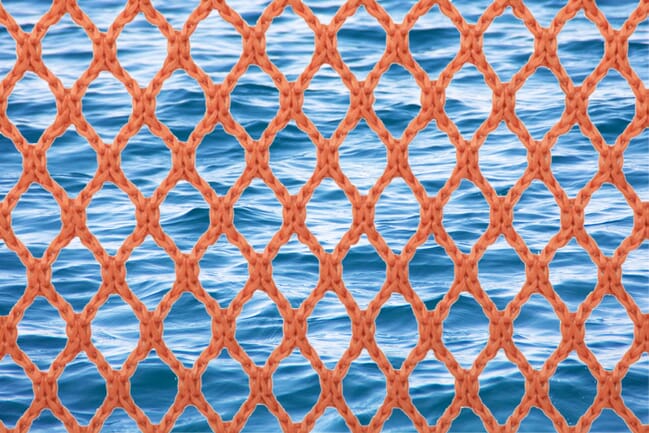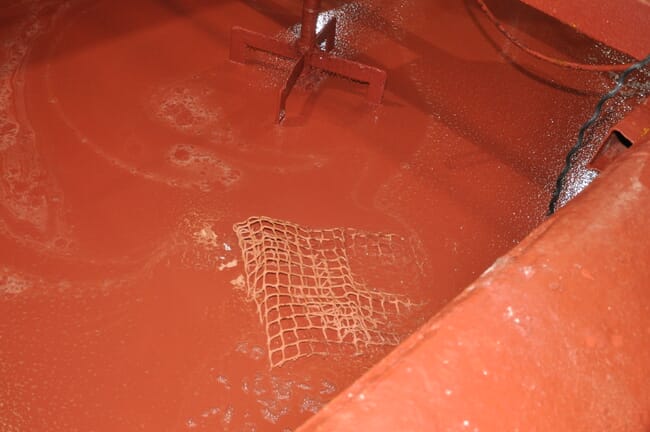
Garware's nets are the only ones on the global market that can be fully painted with traditional water-based anti-fouling paints © Garware
The impregnable Star V4 polyethylene nets are the newest iteration of Garware technical fibres in Chile. According to a news release from the company, the nets are the only ones on the global market that can be fully painted with traditional water-based anti-fouling paints. “Before this technology, HDPE was not paintable. With its development, the nature of the fibre surface is modified, allowing traditional paint to be perfectly fixed,” explains Marcos Jofré, business associate of Garware Chile.
After detecting the industry’s fouling situation in Chile, Garware began developing and testing its new Star V4 nets at farm sites in India before deploying them as grow-out nets at salmon farms in Chile. “Today over 50 percent of salmon companies are testing or permanently using the Star V4 nets, yielding good results, both in impregnation and anti-fouling,” emphasises Jofré.
According to the company, the Star V4 maintains all the characteristics of the original raschel nets – the knotless Star – after 10 years of use, even under aggressive in situ cleaning conditions. The loss of tensile strength is on the order of 15 percent, compared to nylon which loses 40 percent or more in four years. The net does not elongate, shrink or lose its characteristics over time. It has a high resistance to abrasion in humid conditions, incorporates anti-UV additives and, according to Garware, has the highest manufacturing standards worldwide.

© Garware
In-situ net cleaning in Chile remains a complex activity. Logistical issues like distances from farm sites, the availability of cleaning services, costs and labour constraints can make cleaning fish nets unfeasible. Because of this, many of Chile’s aquaculture companies opt to use nets with anti-fouling paints.
“Polyethylene with anti-fouling does not lose resistance over time, providing great flexibility in the strategic process of cleaning the nets, since it is possible to migrate from impregnation to cleaning in situ or vice versa with ease to deliver the better conditions for salmonids, complying with the new regulations required by the sectoral authority,” adds Jofré.




